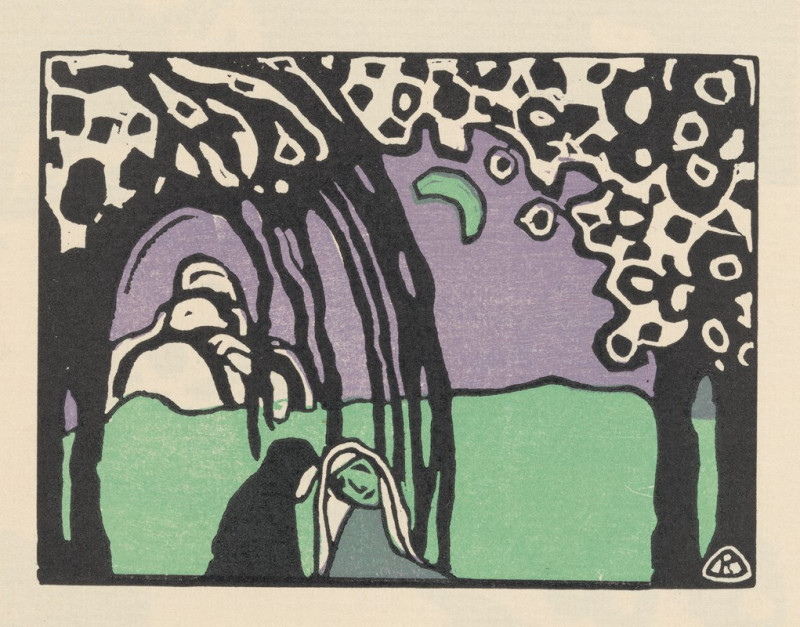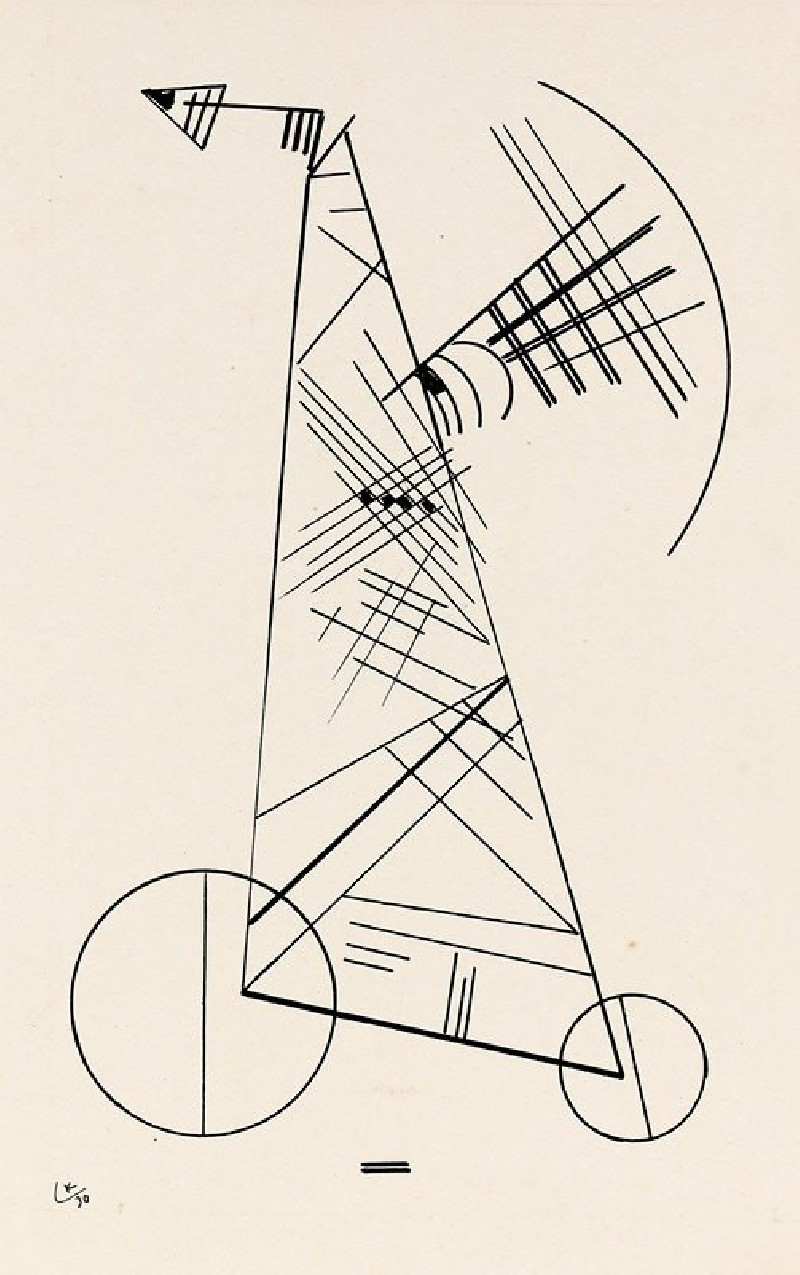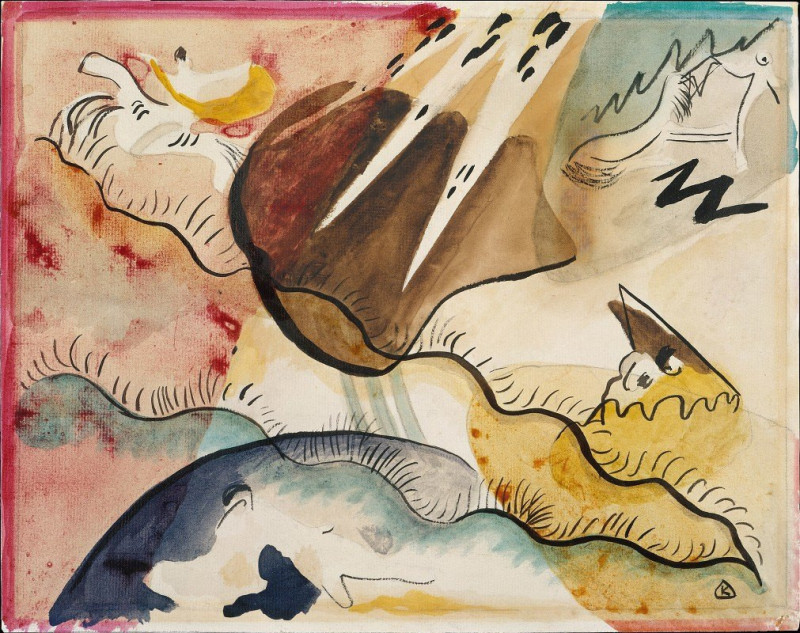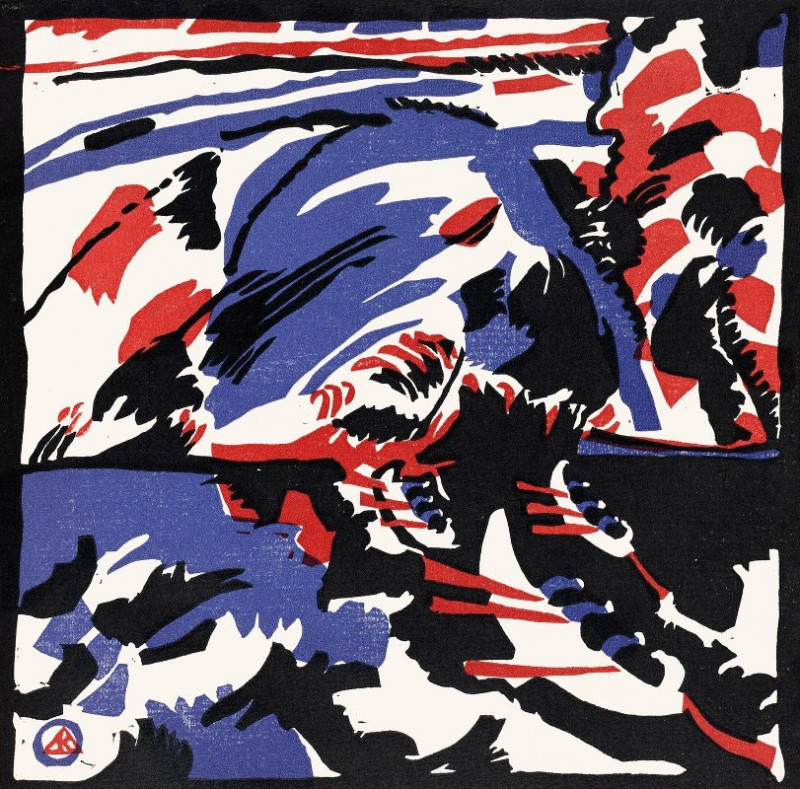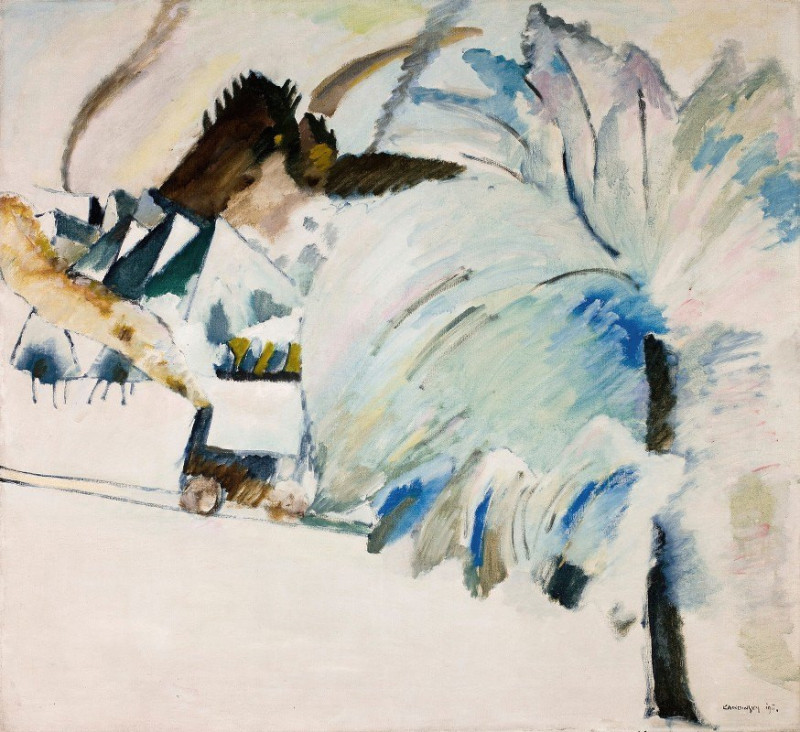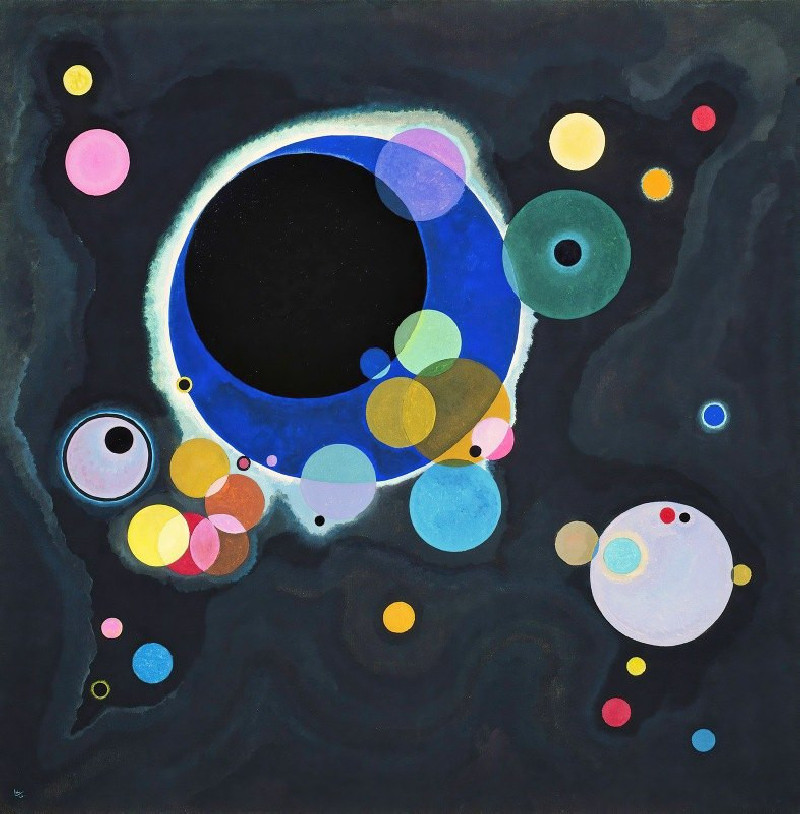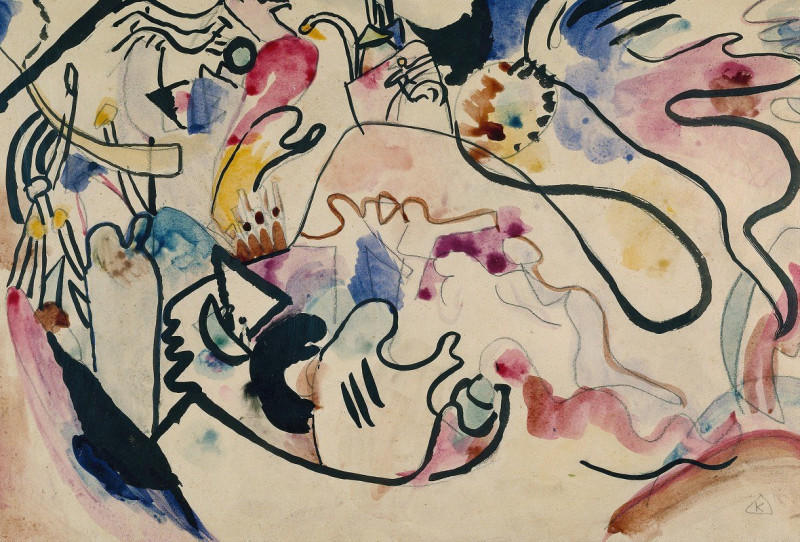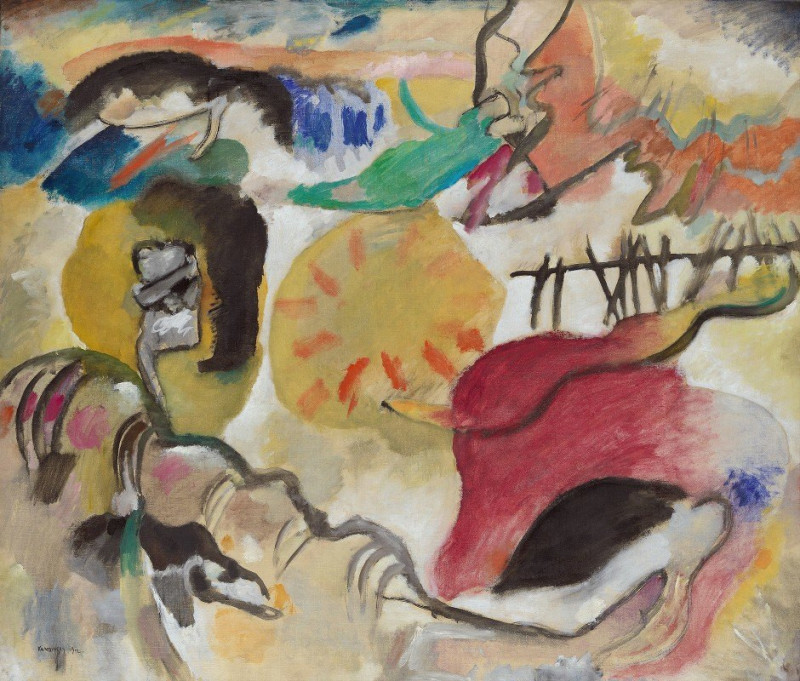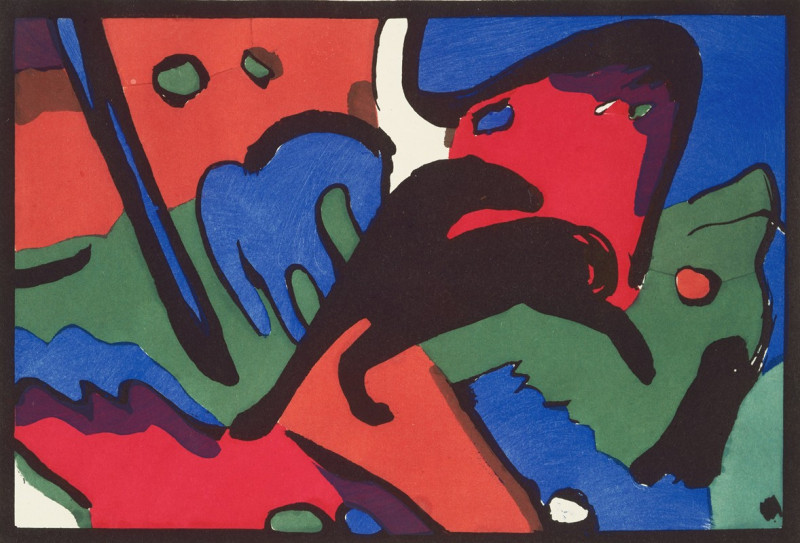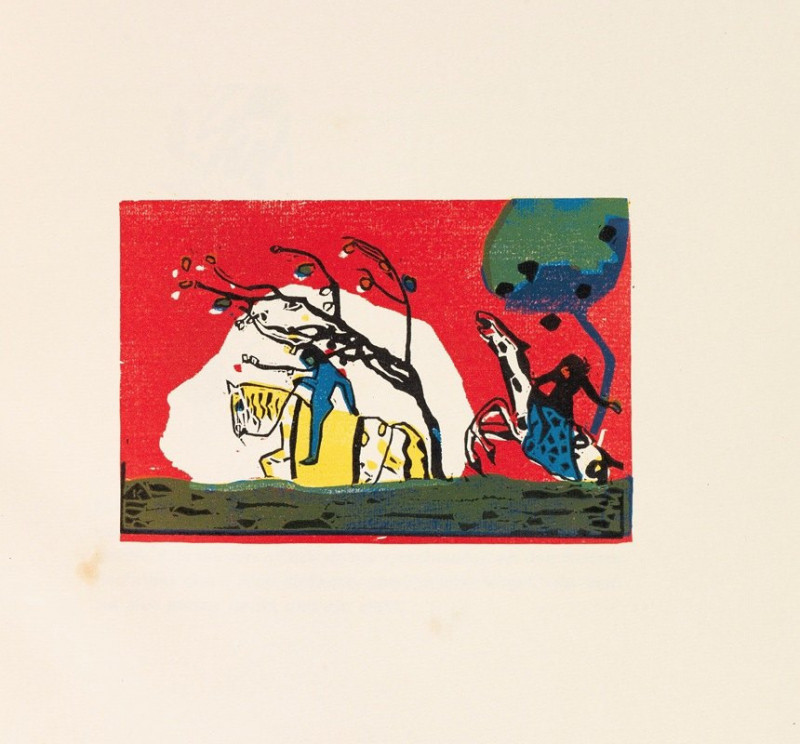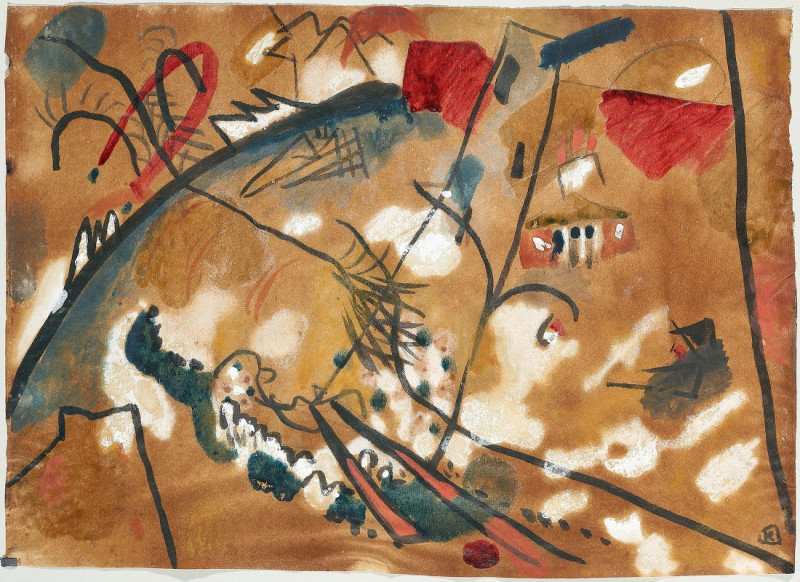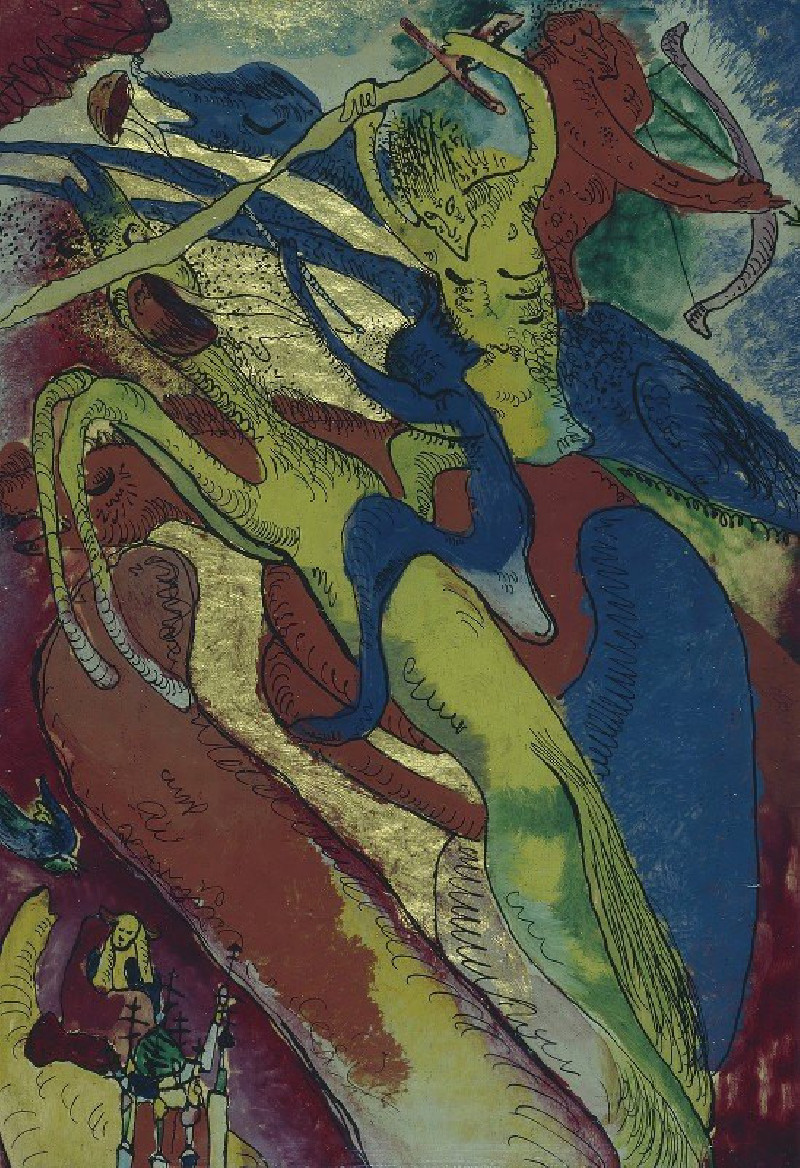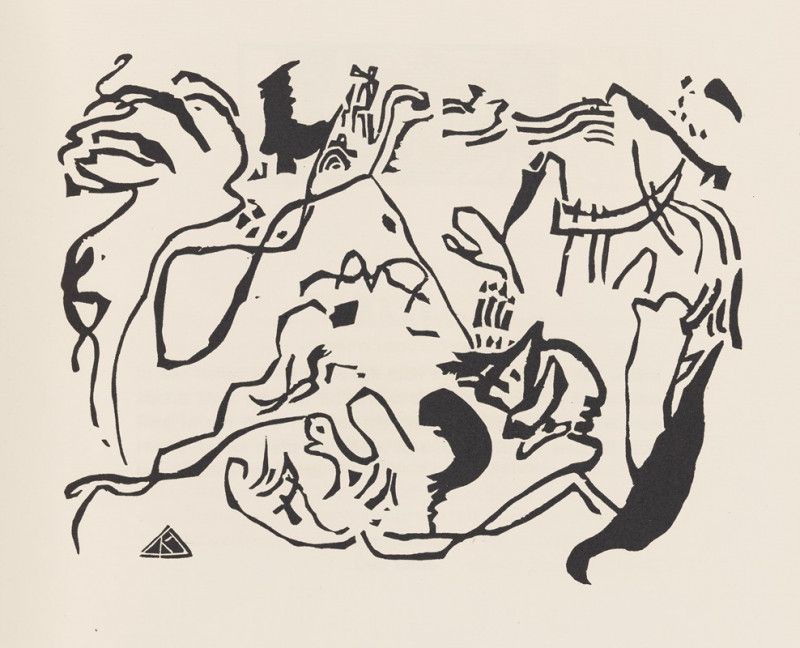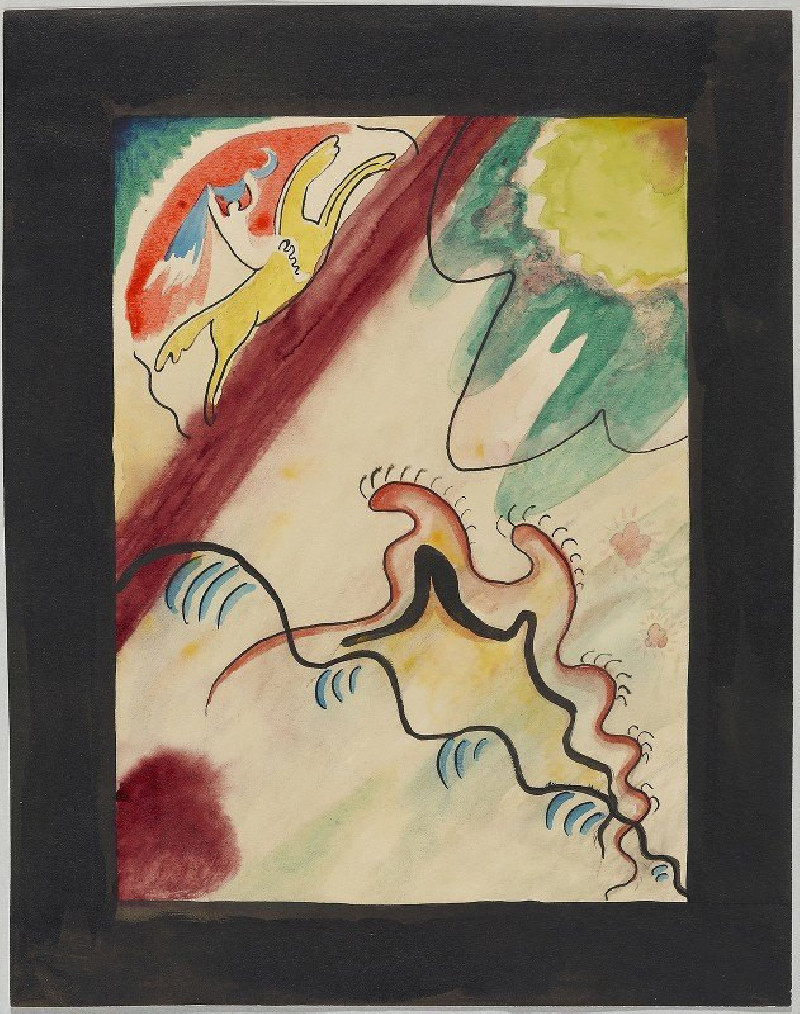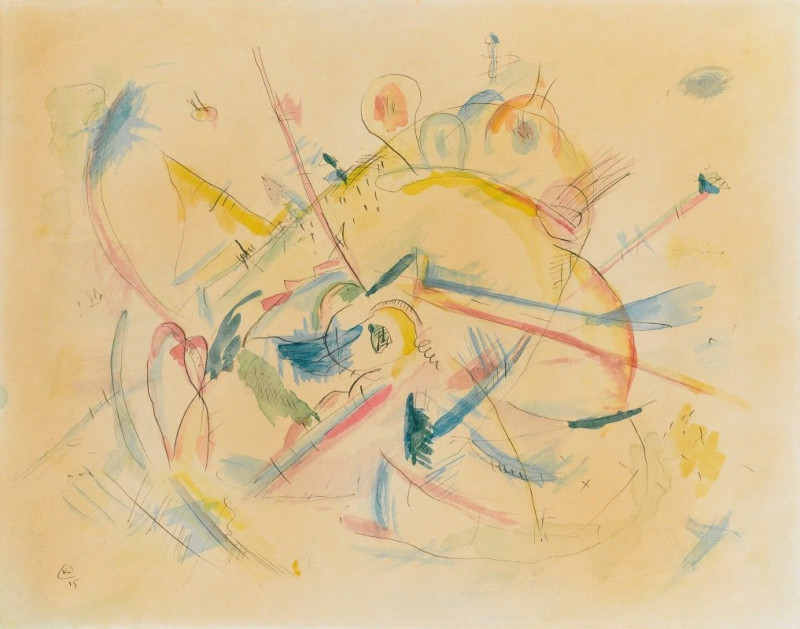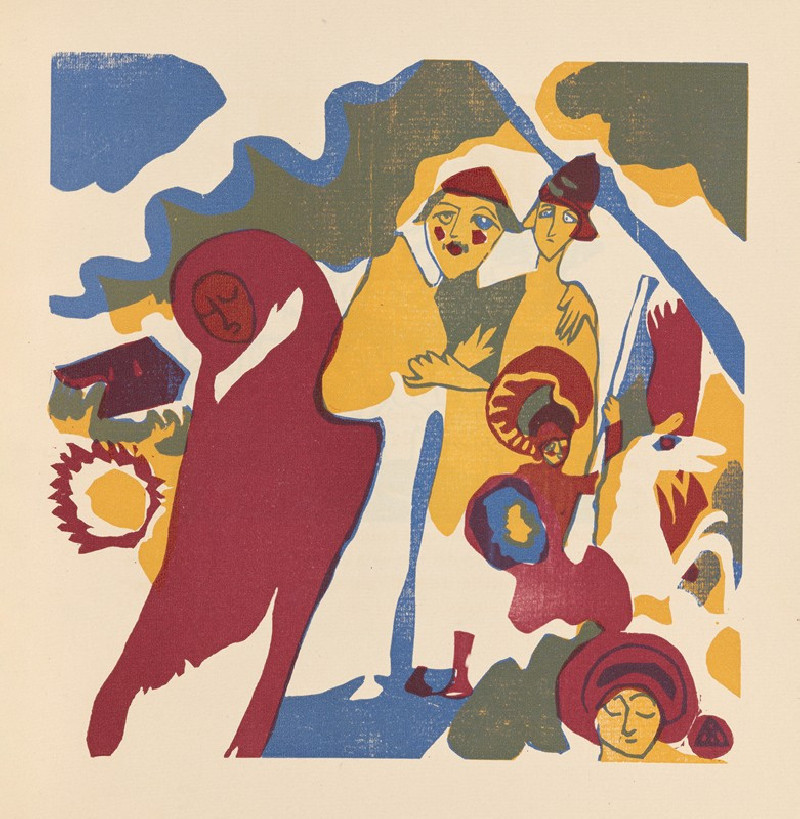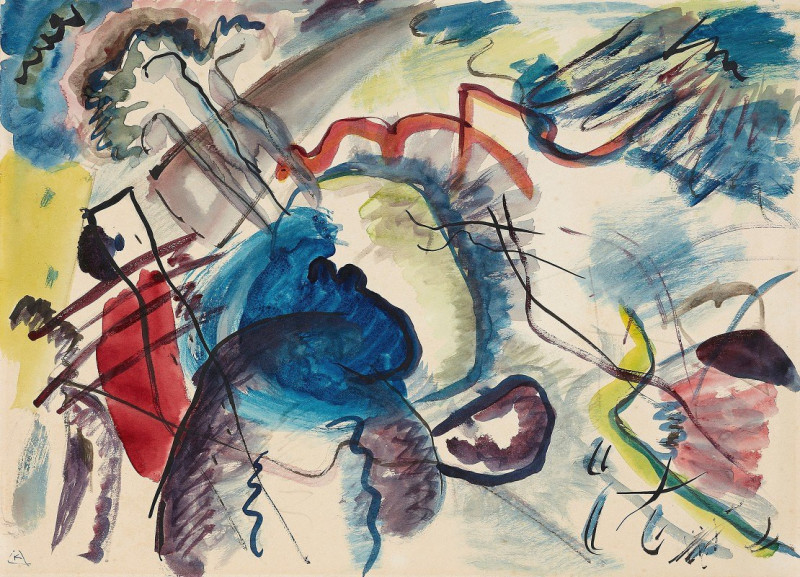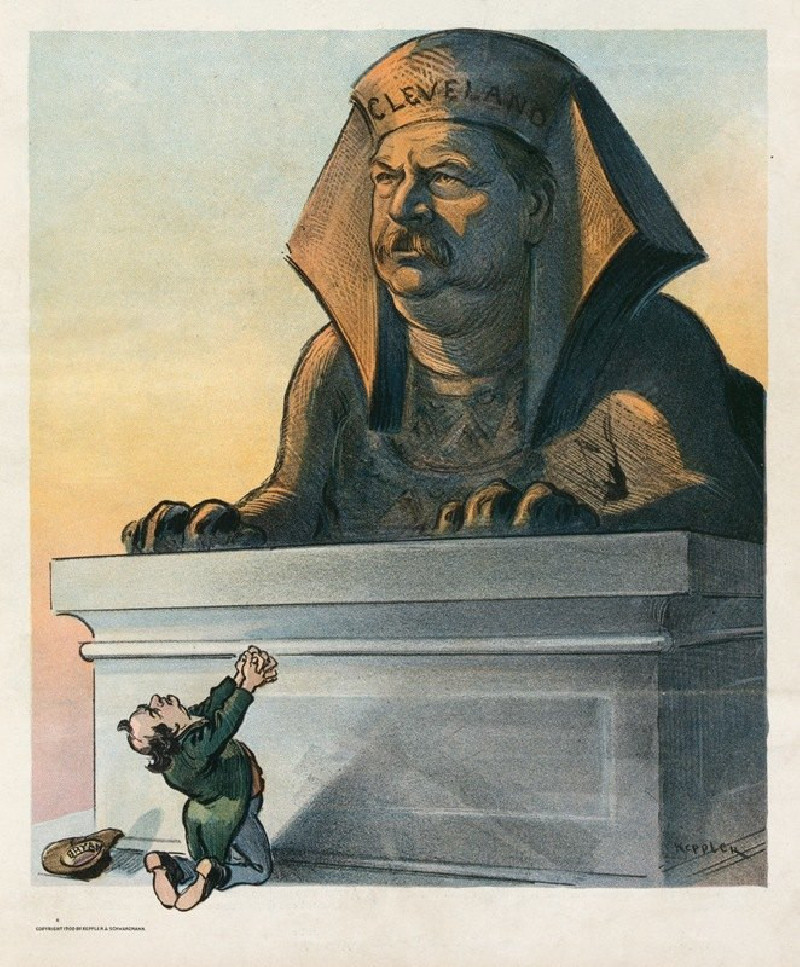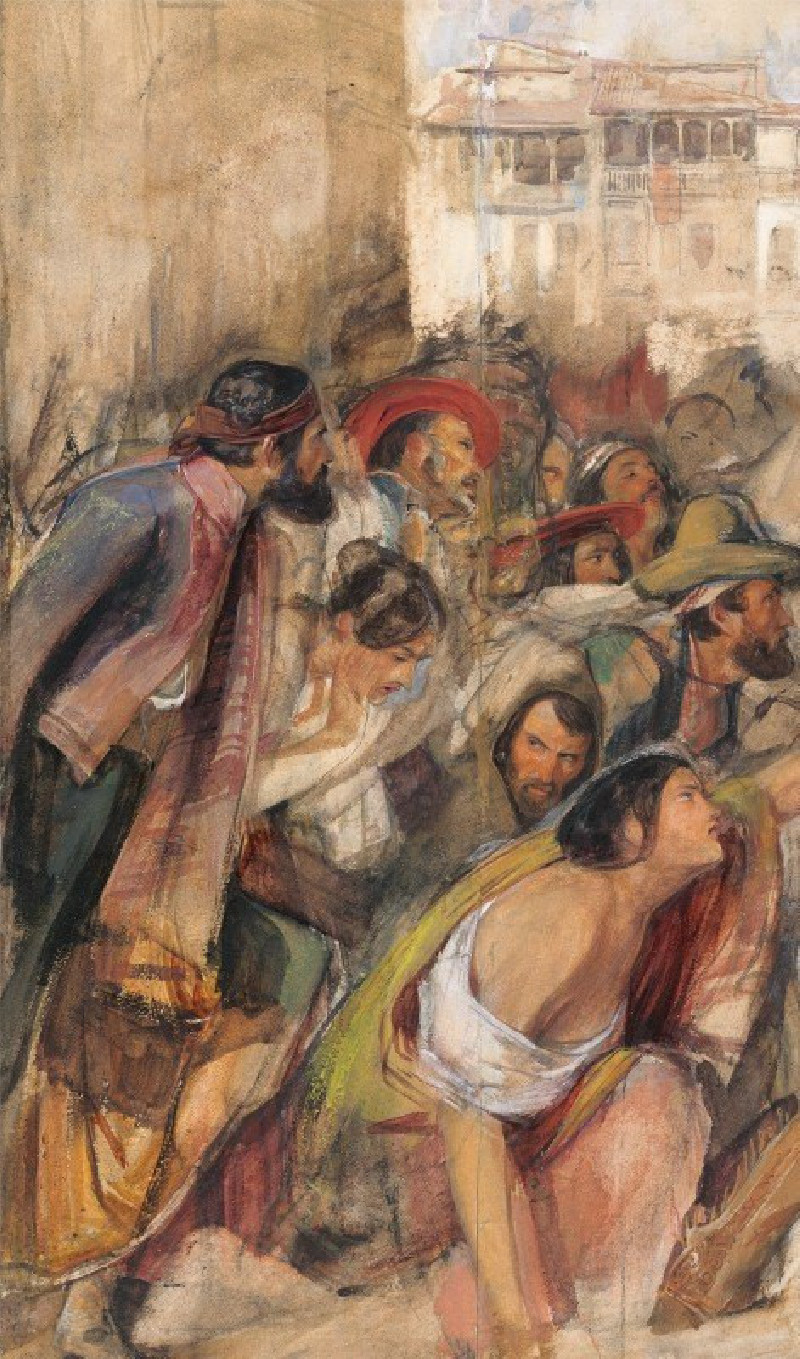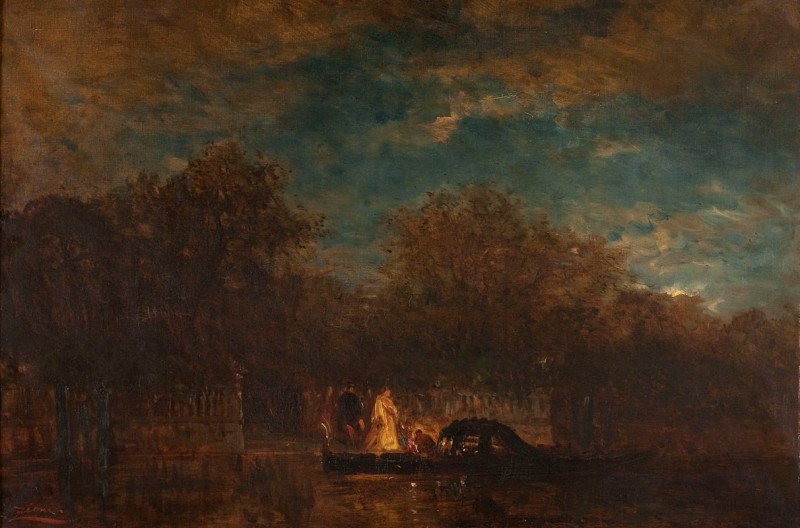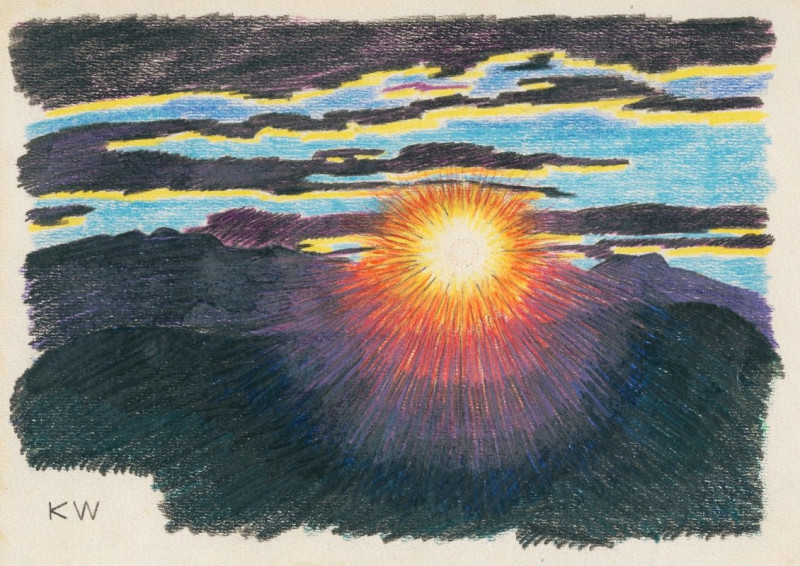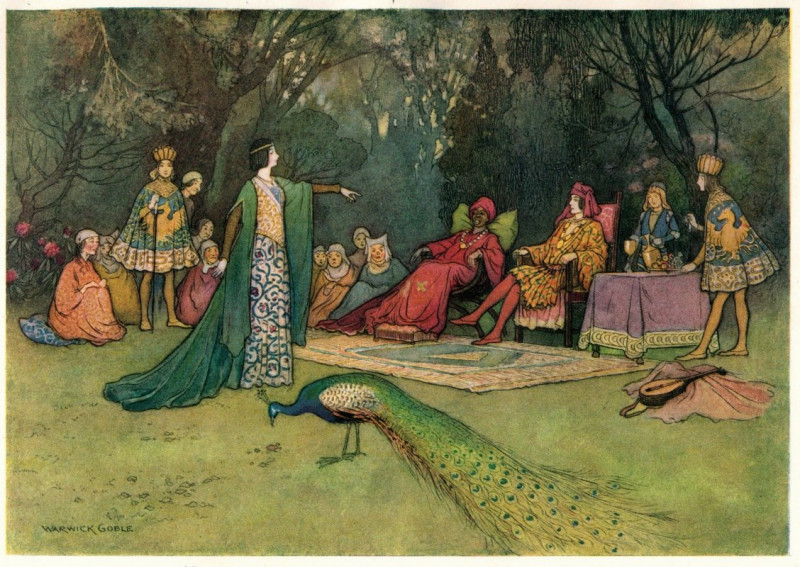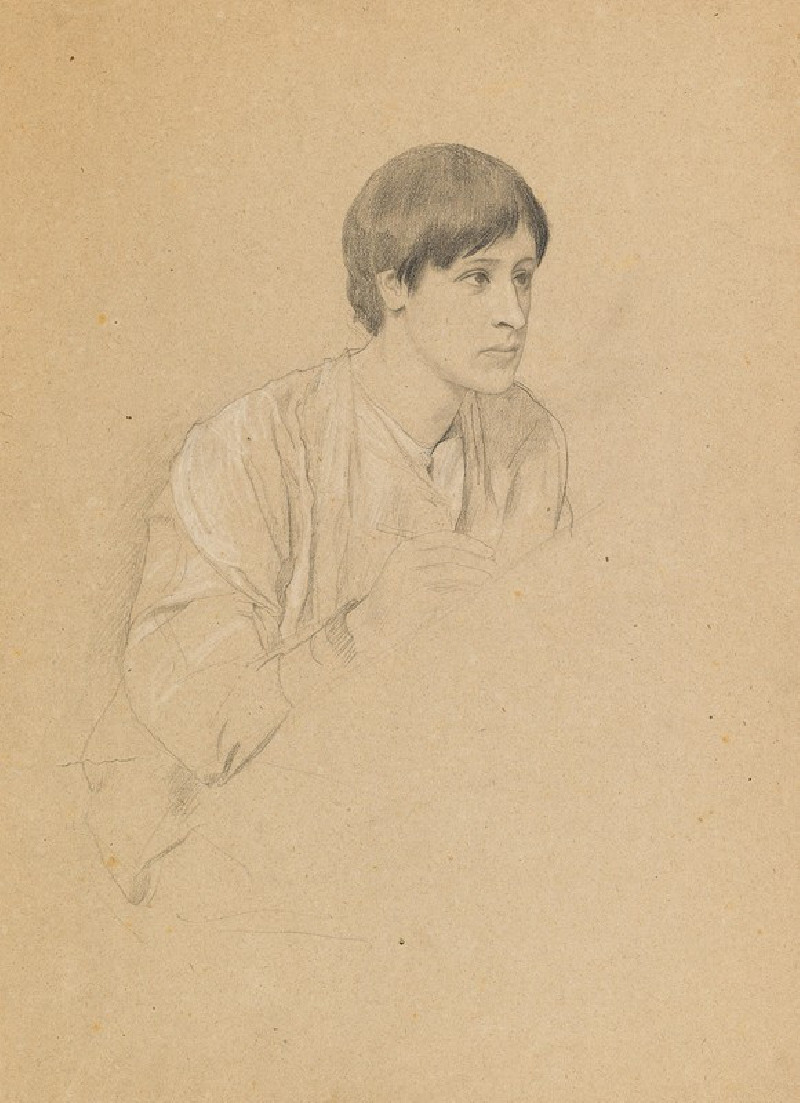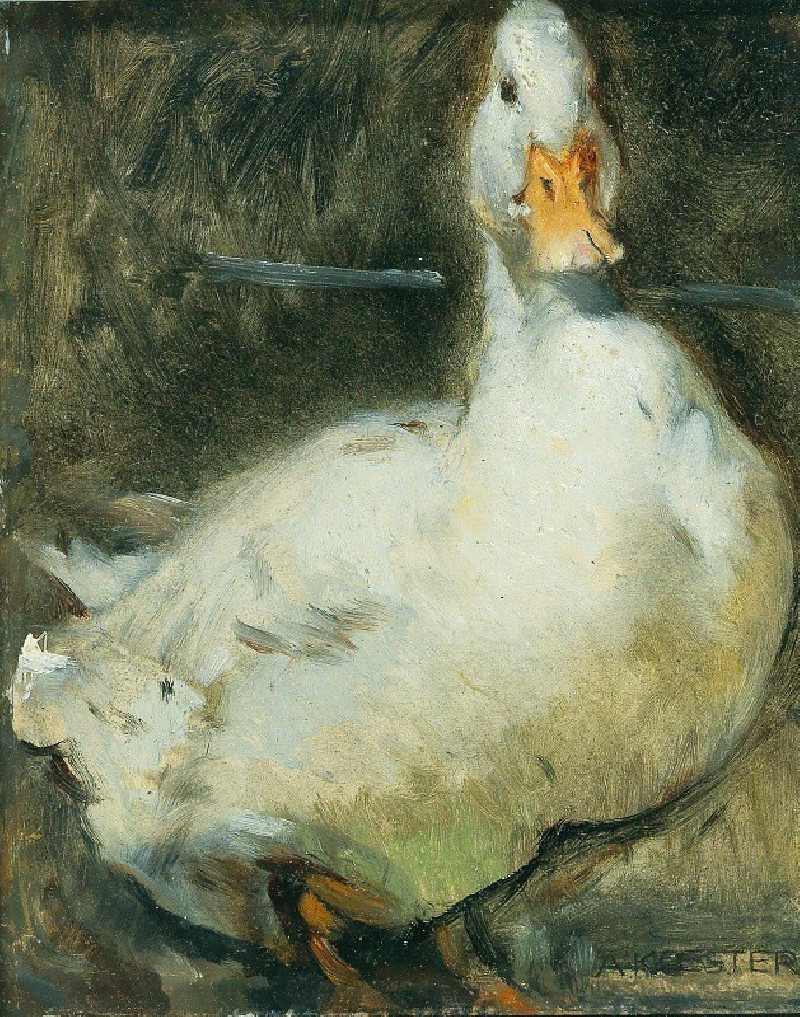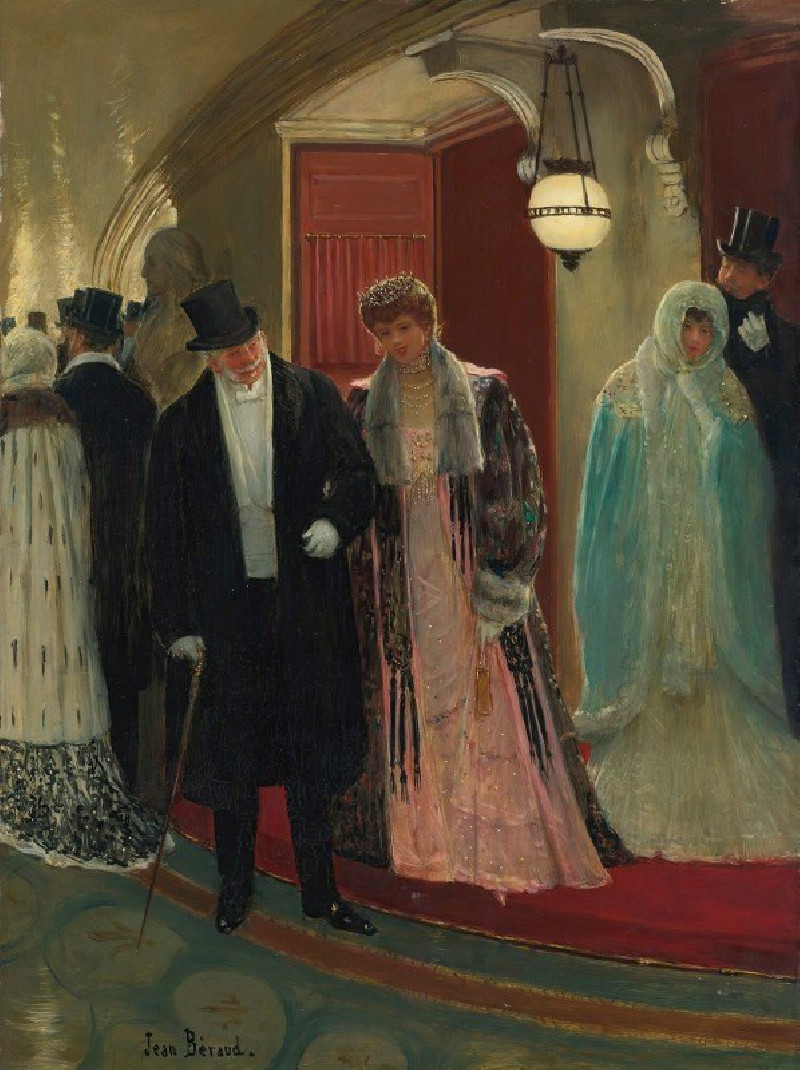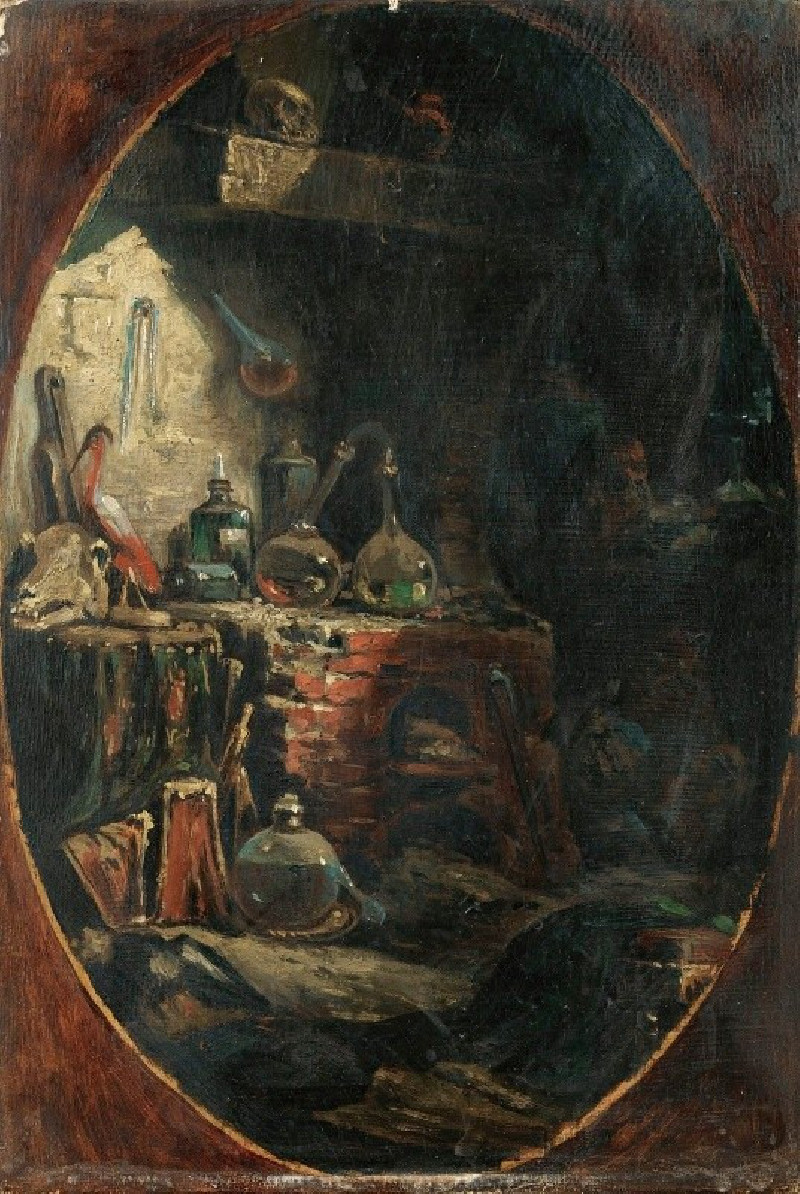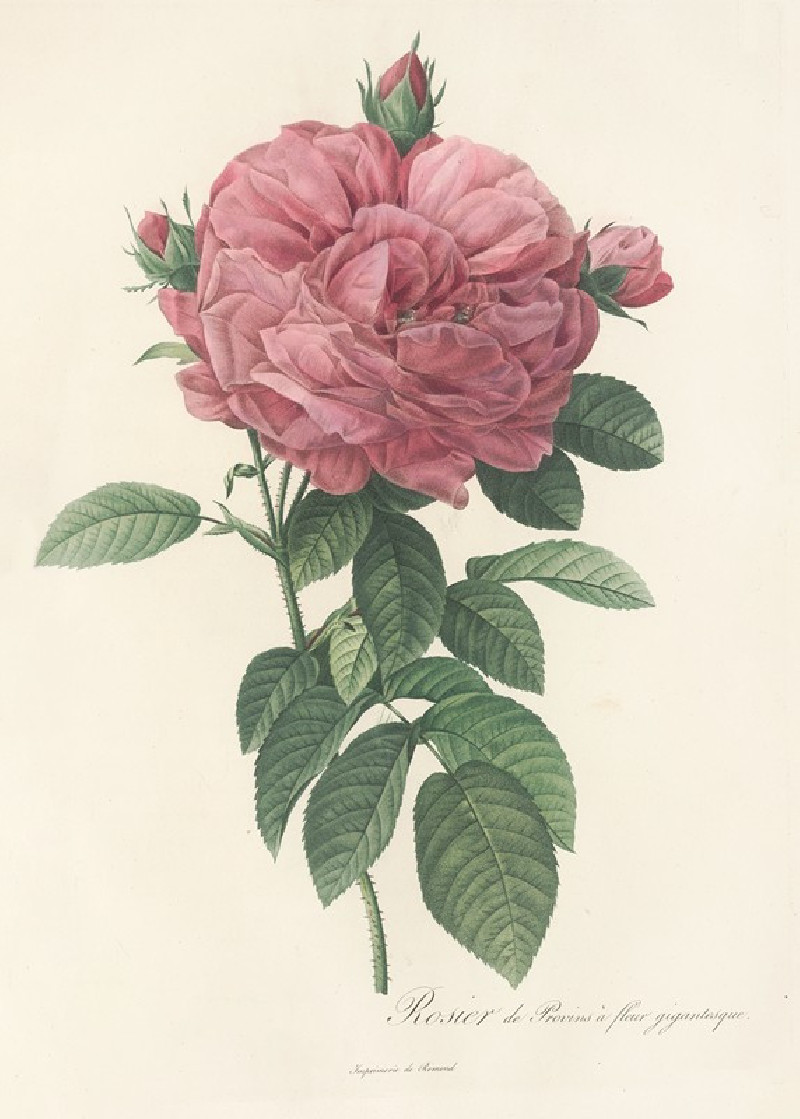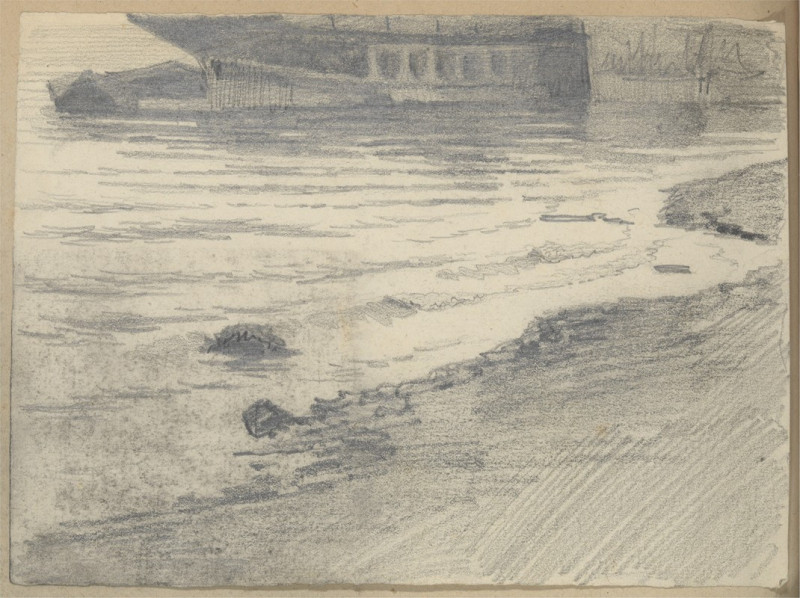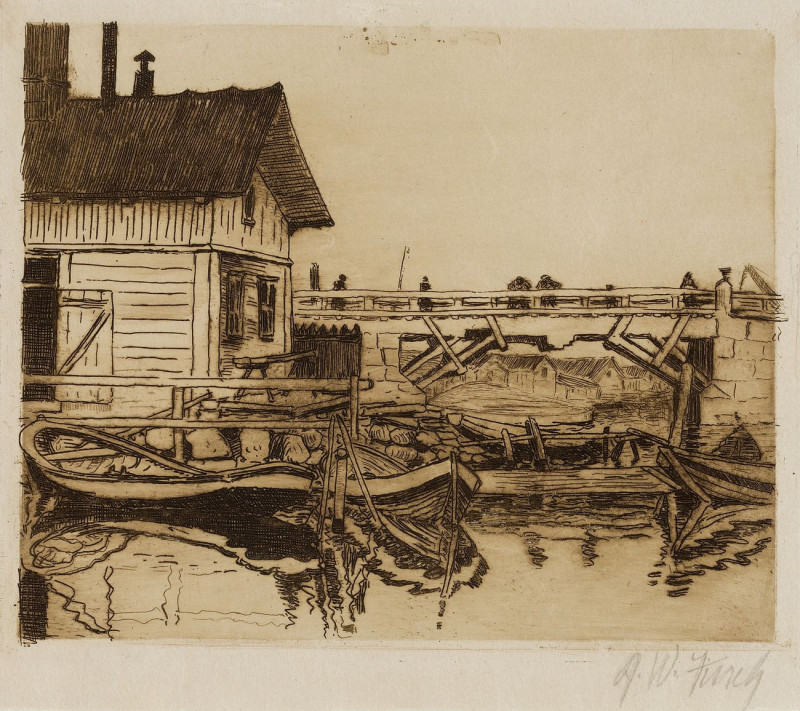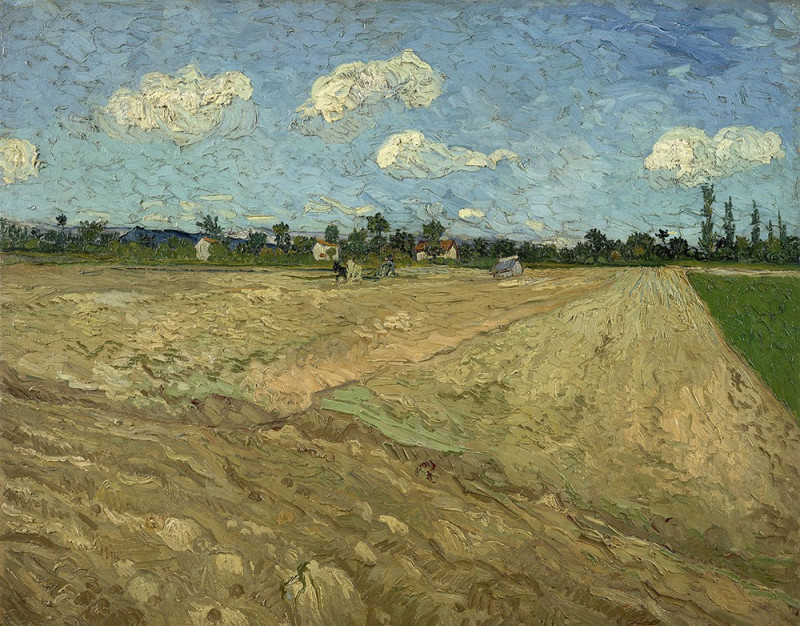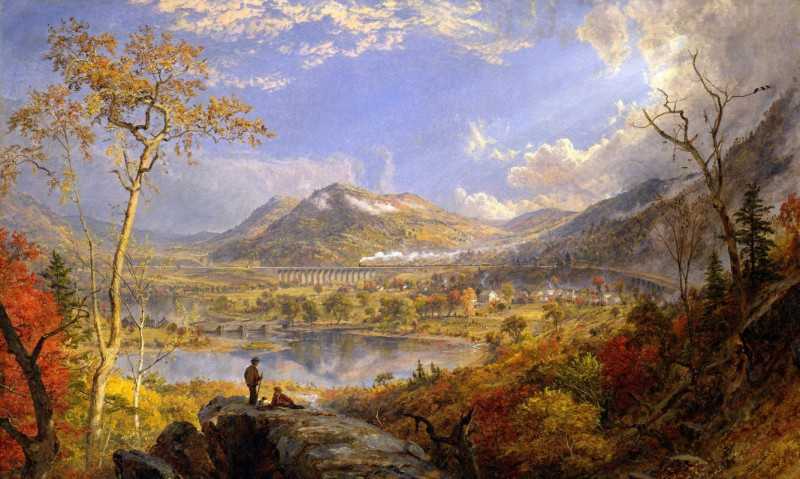Klänge Pl.20 (1913)
Technique: Giclée quality print
Recommended by our customers
More about this artwork
This painting by Wassily Kandinsky, titled "Klänge Pl.20" from 1913, features a composition that is characteristic of Kandinsky’s transition towards abstract art. The artwork uses bold colors and distinct, stark black outlines to segment the different elements, creating a vibrant, almost graphic quality that is similar to woodcut prints.The image depicts a dream-like landscape with large, abstract forms that could be interpreted as trees or plants, juxtaposed with curvilinear forms and crescent-like shapes in vibrant colors. The integration of dark spaces and white speckles creates a feeling of a mystical night scene, possibly under a starry sky or amidst floating lights. The use of areas colored in deep purple and green adds to the otherworldly, whimsical essence of the painting.In "Klänge Pl.20," Kandinsky explores the theme of music and emotion through visual means, a recurring theme in his artistic practice, where he often aimed to represent sound and emotions abstractly to evoke a synesthetic response in the viewer. This piece encourages the audience to not only see the visual aesthetics but to 'feel' the rhythms, perhaps the 'sounds' or 'vibrations' that the colors and shapes might represent. The abstract portrayal allows for myriad personal interpretations, inviting each viewer to engage with the painting in a unique and personal way.
Delivery
Returns
Wassily Wassilyevich Kandinsky was a Russian painter and art theorist. Kandinsky is generally credited as the pioneer of abstract art. Born in Moscow, Kandinsky spent his childhood in Odessa, where he graduated at Grekov Odessa Art school. He enrolled at the University of Moscow, studying law and economics. Successful in his profession—he was offered a professorship (chair of Roman Law) at the University of Dorpat today Tartu, Estonia)—Kandinsky began painting studies (life-drawing, sketching and anatomy) at the age of 30.

